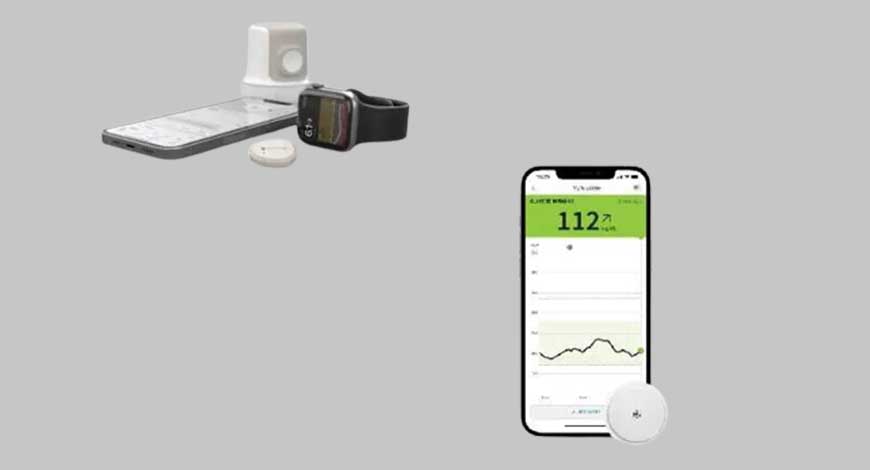Trends
CGMs become mainstay of diabetes care management

This was the sentiment of Dr Emma Wilmot, associate professor at the University of Nottingham, speaking on a panel discussing continuous glucose monitoring (CGM) at the ongoing Diabetes UK Professional Conference taking place in London from 17 April to 19 April. The panel was chaired by Dr Ramzi Ajjan, professor and honorary consultant in diabetes and endocrinology at Leeds Teaching Hospitals Trust.
Amid the sharp rise in the use of diabetes drugs such as those from Eli Lilly and Novo Nordisk, the discussion focused on the medtech industry’s transformation in the disease space.
Along with insulin pumps, CGM devices are at the helm of blood glucose management technology. CGMs are wearable devices that use a sensor under the skin to measure glucose levels in real time and then transmit information to a linked handset or mobile phone.
Dr Wilmot, who is also an honorary consultant diabetologist and founder of the Diabetes Technology Network UK, said that not only do CGMs facilitate better management from a medical perspective, but they also empower patients to manage their condition more efficiently.
“Having access to the data is an educational tool. [Patients] have a better understanding of their diabetes than ever before,” Dr Wilmot said.
Type 2 expansion
As per National Institute for Health and Care Excellence (NICE) guidance, England’s NHS currently offers CGMs to all type 1 diabetes (T1D) patients.
Uptake is slower in patients with type 2 diabetes (T2D), but recent NICE guidance did recommend a subgroup’s access to the technology on the NHS. Evidence now supports the expansion of CGM to routine care of those living with T2D.
Dr James Ridegway, education, and research associate at the Leicester Diabetes Centre at the University Hospitals Leicester NHS Trust, said how the use of this technology makes a big difference to the lives of those living with diabetes and how it is more challenging for someone to do finger pricking not only from a physical perspective but also to understand how to enhance their self-management.
“Finger pricks only give a snapshot, the more we can tame and use these new technologies the better,” Dr Ridgeway added.
The panel highlighted that cost is the main barrier to access. However, speakers were unanimous in that CGM becoming the standard of care for T2D patients is a necessity. A potential first target is the paediatric population with high-risk glycaemia levels, said Dr Fiona Campbell, a consultant in children and young people’s diabetes care. CGMs have already helped young T1D patients by offering a less invasive method of blood measuring.
“Blood glucose testing was difficult in the paediatric space. It was important to find a route to gain important insight into data without the invasive procedure of a finger prick,” said Dr Campbell, who is also the clinical lead of a national diabetes network for children and young people.
Technology failure?
One aspect raised was technology failure – namely inaccurate readings of blood glucose levels. The panel was quick to highlight that although devices can produce errors, patient use is also a key factor – the latter often being the cause of incorrect readings.
According to Dr Ridgeway, evaluating patient behaviour is critical before jumping to conclusions. Dehydration, for example, can cause variable readings. Understanding patient use of the technology is important before directly attaching any issues to the device itself, he added.
Dr Wilmot explained that the current broad field of CGM devices means a more personalised approach to diabetes care is possible: “If we have lots of issues with an individual, we have the luxury of having a range of CGMs to choose from.”
This range is only likely to increase, according to analysis by GlobalData.
The global CGM sensor device market is estimated to grow to $5bn by 2033, up from $3.5bn in 2023, according to analysis by GlobalData.
The panel’s discussion focused on the adoption journey of Abbott’s Freestyle Libre system. According to GlobalData, Abbott has the second largest share in the insulin pump and CGM global market, just behind Medtronic.
GlobalData analyst David Beauchamp said: “Continuous glucose monitors are a rapidly evolving, highly innovative segment within the diabetes care market. The technologies behind these devices have become more accurate and advanced over the past few years, with multiple major medical device companies entering the market.
“Implantable CGMs have yet to gain a major share of the market; however, the prospect of a long-term, highly accurate CGM has the potential to disrupt the existing market.” Medical Device Network














